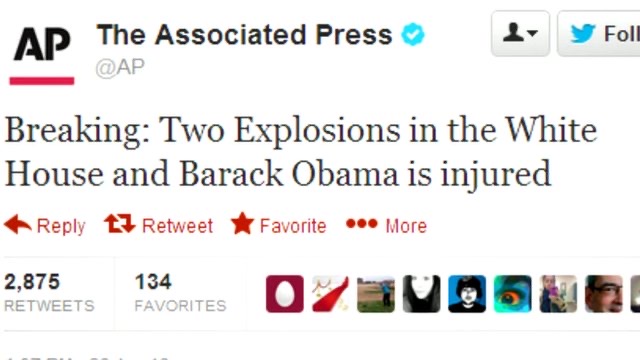Fake news and its effects on the COVID-19 pandemic
Fake news. The deliberate spread of false information, plaguing our media everyday.
Fake news may seem trivial being easy to look up and debunk, but its ability to fool millions of people proves otherwise.
Just before the quarantine began, my dad and sister drove up to her college to retrieve her belongings. The drive takes 12 hours there and back, so they decided to stay overnight and drive back the next morning.
Back at home, my mom received a message from her boss at work about a national two-week lockdown, effective in the next 48 hours. The message stated it was from a “friend from the military”, and had spread like a wildfire on Facebook.
Worried my dad and sister wouldn’t be allowed to drive home the next day, my mom quickly forwarded the message to them. She suggested it could be fake news, but they should check it out just in case.
At the college, my dad overheard a campus security officer discussing that exact same lockdown warning. Deciding to not risk it, my dad and sister drive through the night all the way back home.
Turns out, that warning was false, and their driving 12 hours in one day could’ve been easily split into two. The message, posted on Facebook, was instigated by a troll in America but amplified by Chinese operatives utilizing techniques by Russian hackers (NYTIMES). In just 48 hours, the message spread across the nation and affected thousands of lives.
Fake news can spread anywhere: newspapers, advertisements, social media, and much more. The biggest contributing factor to the transmission of false information is social media.
Social platforms give people the liberty to post anything without fact checks or examination of sources. Media users don’t tend to immediately search everything they see, so whatever grabs their attention takes a surprising hold on their beliefs. Junior Anh-Thi Pham explains how we are much more disposed to believe disinformation if it confirms our wants or beliefs.
“If [the news] is too good to be true, we’ll be more susceptible to believe it, as it affects us positively. With social media, it makes it easier to believe false information,” Pham stated.
While fake news posts can affect any viewer, the impact varies. For instance, research shows that the elderly are over three times more prone to believing fabricated information than people ages 18-29 (niemanlab). This might be due to older people’s lack of constant exposure to social media and its questionable news sources.
“Teens are constantly bombarded by fake news on social media,” junior Sahana Inteti said. “[They] have been taught and programmed to sort news into fake and real. [Elderly people] are not used to the large amounts of fake news circulating social media.”
Despite fake news commonly affecting a certain age group, teenagers are not invincible when it comes to believing lies.
“I have come across fake news, [and although] the way it was formatted made me question its credibility, I did believe it at first. This made me more skeptical and hesitant to believe everything I see online,” sophomore Bridget Albers said.
Fake news like this message can not only influence one’s life into acting upon false pretenses, but also undermine the credibility of real news sources. Because of the constant battle between what is real and what is fake, people have begun to align a real news source’s credibility with that of fake news. This influx of false information causes many to not believe anything they see, damaging the reputation of real news sources, such as the New York Times and CNN.
What further perpetuates the doubting of real news companies’ verity are hackers who use the news source’s front as a way of spreading disinformation attached to their name. For example, a hacker broke into The Associated Press’ Twitter account and posted a breaking news headline about an explosion in the White House injuring Obama. Despite the company’s quick apology and explanation that they were hacked into, the tweet had already instantaneously been liked, retweeted, and forwarded thousands of times.
The enormous spread of disinformation grips the country especially in times of turmoil, such as in the midst of this COVID-19 pandemic. People are pining for any good news about the virus, real or fake, while also being scared into submission of believing bad news.
Messages like the one my family received are still circulating online, in all different shapes and sizes. Fake news has the powerful effect of persuading people into believing what they want, which can cause serious ramifications in the credibility or dubiousness of a source.

Rosa Madden, a junior at Jesuit High School, is taking her first year of journalism this year. She’s excited to write articles for the paper and explore new topics such as the rules, norms, and trends at Jesuit. Taking a look at Jesuit’s sport’s teams and academic achievements as well as struggles also sounds interesting. Stepping back from everyday life, Rosa would also like to look at more national topics as well as global ones, too. At Jesuit, Rosa’s day is full of classes and extracurricular activities. Her favorite subject is English, even if it can be quite difficult at times! Aside from schoolwork, Rosa busies herself after-school with cross country, swimming, track, and various clubs. She likes feeling accomplished everyday, allowing her to be more productive while working on homework later in the night. When she’s not at school, Rosa loves to read, take pictures, play with her dog, and bake. She bakes mainly a lot of cookies and cakes, but she also likes to explore new recipes either passed down from her mom or looking them up on the internet. Another pastime of Rosa’s is participating in Girl Scouts. From working on the Gold Award to completing numerous journeys, Rosa plans to finish Girl Scouts through high school.








